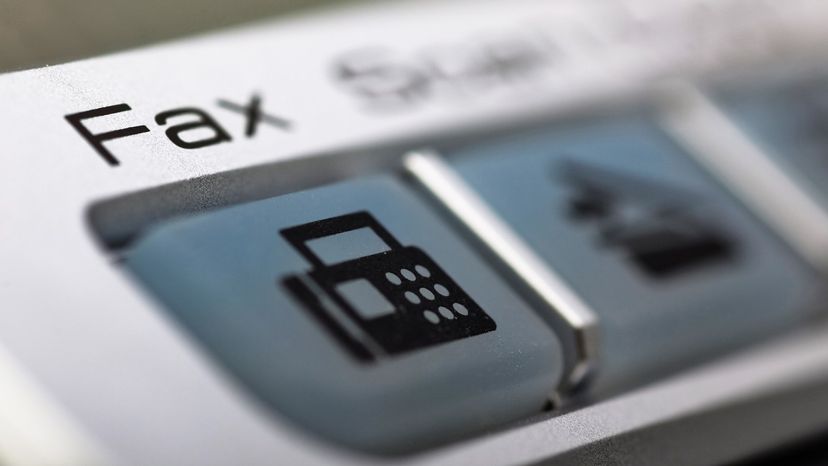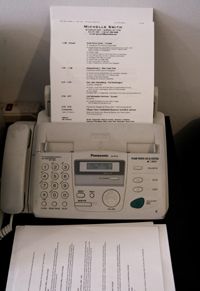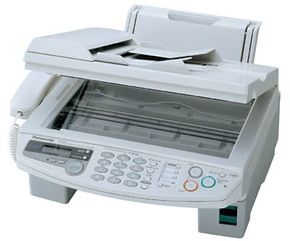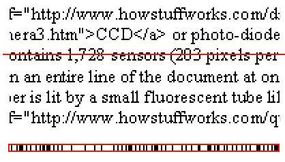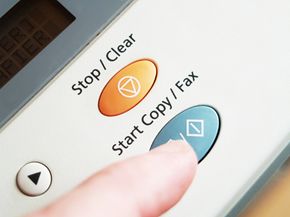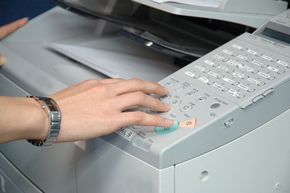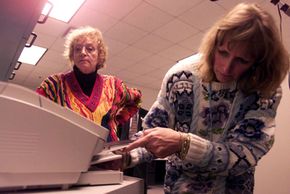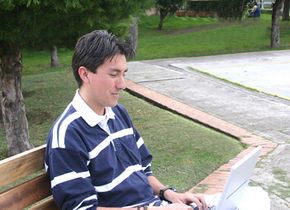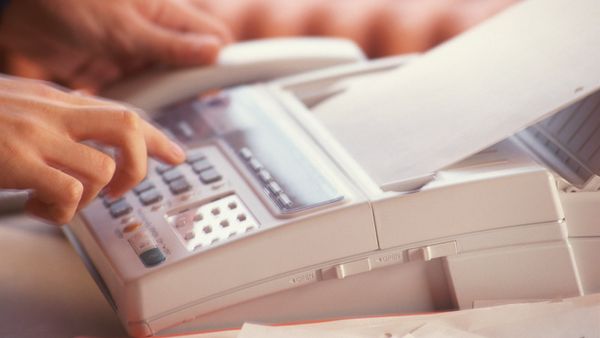Fax machines are complicated pieces of equipment with delicate sensors, motors and finely calibrated moving parts. As much as you might want to kick your office fax machine when there's a paper jam, there are other solutions. Here are some troubleshooting tips for the most common fax problems: image quality, paper jams and connectivity issues.
The most common image quality problems with faxes are pages that come out too dark, too light or are unreadable due to streaks, splotches and spots. For dark and light pages, it could be as simple as changing the darkness or density setting on the receiving machine [source: FineStar Imaging]. If the receiver does a test print and the page comes out clean, then the problem is most likely with the sender's machine.
The sender should open up the document feed area of the fax machine and clean all the surfaces and moving parts with a slightly damp cloth [source: Sands Office Equipment, Inc.] If the fax machine is one of those all-in-one gadgets that doubles as a scanner and copier, clean off the scanner glass as well with a little glass cleaner.
If the test print comes out with lines and splotches, then the problem is on the receiving end. The most common cause of dirty copies is spilled or leaking toner or ink. Laser printers and fax machines use large toner cartridges containing dry, black, powdery toner [source: Automation Consulting and Supplies]. If you open up the printer door on the fax machine and see a bunch of dry toner lying around, remove the toner cartridge and give it a shake. If toner falls out of the cartridge, you should buy a new one.
Inkjet printers and fax machines use liquid ink, not dry toner [source: Automation Consulting and Supplies]. If you see drips or puddles of wet ink in the printing area, you'll want to replace the ink cartridge and clean the entire area well.
Paper jams are another common fax machine problem. If you have a small fax machine, there are only two areas where paper could get jammed: the document feeder and the printing area. Larger machines have more gears and moving parts where paper can get stuck, but luckily those machines often come with sensors to tell you where the jam is located.
The key to removing jammed paper from a fax machine is to always pull in the direction that the paper naturally travels [source: FineStar Imaging]. Yanking paper out in the opposite direction could damage small wheels and gears or leave scraps of shredded paper in the machine [source: FineStar Imaging].
If the fax machine signals an error, check the manual or call the manufacturer to see what it means. If you get a lot of communications errors, make sure the phone line is plugged in all the way and that you hear a clear dial tone through the phone receiver. If not, you might want to call the telephone company and have them check your line for interference.
On the next page, we'll talk about portable fax machines.
